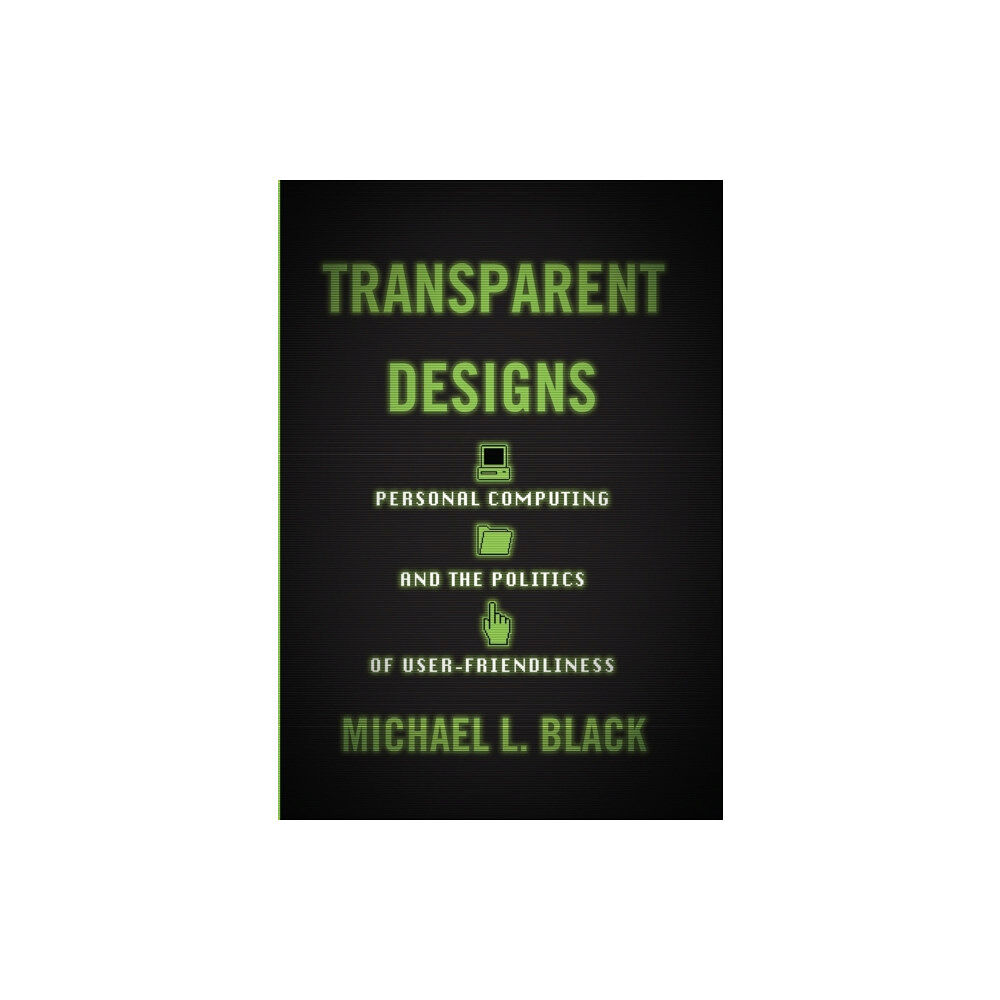- Hem
- Böcker
- Kurslitteratur
- Samhälle & Politik
- Transparent Designs (inbunden, eng)

Transparent Designs (inbunden, eng)
This fascinating cultural history of the personal computer explains how user-friendly design allows tech companies to build systems that we...
625 kr
Slut i lager
- Fri frakt
Fri frakt över 299:-
Snabb leverans
Alltid låga priser
Produktbeskrivning
This fascinating cultural history of the personal computer explains how user-friendly design allows tech companies to build systems that we cannot understand. Modern personal computers are easy to use, and their welcoming, user-friendly interfaces encourage us to see them as designed for our individual benefit.
Rarely, however, do these interfaces invite us to consider how our individual uses support the broader political and economic strategies of their designers. In Transparent Designs, Michael L. Black revisits early debates from hobbyist newsletters, computing magazines, user manuals, and advertisements about how personal computers could be seen as usable and useful by the average person.
Black examines how early personal computers from the Tandy TRS-80 and Commodore PET to the IBM PC and Apple Macintosh were marketed to an American public that was high on the bold promises of the computing revolution but also skeptical about their ability to participate in it.
Through this careful archival study, he shows how many of the foundational principles of usability theory were shaped through disagreements over the languages and business strategies developed in response to this skepticism. In short, this book asks us to consider the consequences of a computational culture that is based on the assumption that the average person does not need to know anything about the internal operations of the computers we've come to depend on for everything.
Expanding our definition of usability, Transparent Designs examines how popular and technical rhetoric shapes user expectations about what counts as usable and useful as much as or even more so than hardware and software interfaces. Offering a fresh look at the first decade of personal computing, Black highlights how the concept of usability has been leveraged historically to smooth over conflicts between the rhetoric of computing and its material experience.
Readers interested in vintage computing, the history of technology, digital rhetoric, or American culture will be fascinated in this book.
Rarely, however, do these interfaces invite us to consider how our individual uses support the broader political and economic strategies of their designers. In Transparent Designs, Michael L. Black revisits early debates from hobbyist newsletters, computing magazines, user manuals, and advertisements about how personal computers could be seen as usable and useful by the average person.
Black examines how early personal computers from the Tandy TRS-80 and Commodore PET to the IBM PC and Apple Macintosh were marketed to an American public that was high on the bold promises of the computing revolution but also skeptical about their ability to participate in it.
Through this careful archival study, he shows how many of the foundational principles of usability theory were shaped through disagreements over the languages and business strategies developed in response to this skepticism. In short, this book asks us to consider the consequences of a computational culture that is based on the assumption that the average person does not need to know anything about the internal operations of the computers we've come to depend on for everything.
Expanding our definition of usability, Transparent Designs examines how popular and technical rhetoric shapes user expectations about what counts as usable and useful as much as or even more so than hardware and software interfaces. Offering a fresh look at the first decade of personal computing, Black highlights how the concept of usability has been leveraged historically to smooth over conflicts between the rhetoric of computing and its material experience.
Readers interested in vintage computing, the history of technology, digital rhetoric, or American culture will be fascinated in this book.
| Format | Inbunden |
| Omfång | 280 sidor |
| Språk | Engelska |
| Förlag | Johns Hopkins University Press |
| Utgivningsdatum | 2022-05-24 |
| ISBN | 9781421443539 |
Specifikation
Böcker
- Inbunden, 280, Engelska, Johns Hopkins University Press, 2022-05-24, 9781421443539
Leverans
Vi erbjuder flera smidiga leveransalternativ beroende på ditt postnummer, såsom Budbee Box, Early Bird, Instabox och DB Schenker. Vid köp över 299 kr är leveransen kostnadsfri, annars tillkommer en fraktavgift från 29 kr. Välj det alternativ som passar dig bäst för en bekväm leverans.
Betalning
Du kan betala tryggt och enkelt via Avarda med flera alternativ: Swish för snabb betalning, kortbetalning med VISA eller MasterCard, faktura med 30 dagars betalningstid, eller konto för flexibel delbetalning.
Specifikation
Böcker
- Format Inbunden
- Antal sidor 280
- Språk Engelska
- Förlag Johns Hopkins University Press
- Utgivningsdatum 2022-05-24
- ISBN 9781421443539
